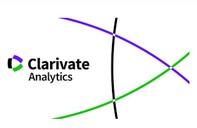ANALYSIS OF VISUAL PERCEPTUAL SPACE
Abstract
Many authors have studied the mathematical representation of the perceptual space (Baird, 1970; Suppes, 1977; Wagner, 1985). These works are fundamental within the psychophysical field since the metricity of the perceptual space is assumed in the different scaling and curve fitting techniques. Our research tries to explain irregularities found in the psychophysical functions for olfactory (Garriga, 1985b, 1987) and tactile (Coello, 1989) data. One suggests that such irregularities are due to the non-Euclidean nature of the perceptual space. Starting with the "psychological" definition of an Euclidean space given in Garriga (1985a) one studies the linearity and metricity components using line length and distance estimations obtained from the extended triangular method. Results show that the visual perceptual space described from our stimuli is not Euclidean.Downloads
The works published in this journal are subject to the following terms:
1. The Publications Service of the University of Murcia (the publisher) retains the property rights (copyright) of published works, and encourages and enables the reuse of the same under the license specified in paragraph 2.
© Servicio de Publicaciones, Universidad de Murcia, 2022
2. The works are published in the online edition of the journal under CC BY-SA 4.0 license, a Creative Commons Reconocimiento-CompartirIgual 4.0 (legal text). You are free to:
- Share: copy and redistribute the material in any medium or format for any purpose, even commercially.
- Adapt: remix, transform, and build upon the material for any purpose, even commercially.
The licensor cannot revoke these freedoms as long as you follow the license terms, under the following terms:
- Attribution: You must give appropriate credit , provide a link to the license, and indicate if changes were made . You may do so in any reasonable manner, but not in any way that suggests the licensor endorses you or your use.
- ShareAlike: If you remix, transform, or build upon the material, you must distribute your contributions under the same license as the original.
No additional restrictions: You may not apply legal terms or technological measures that legally restrict others from doing anything the license permits.
This work is licensed under a Creative Commons Attribution-ShareAlike 4.0 International License.
3. Conditions of self-archiving. Is allowed and encouraged the authors to disseminate electronically pre-print versions (version before being evaluated and sent to the journal) and / or post-print (version reviewed and accepted for publication) of their works before publication, as it encourages its earliest circulation and diffusion and thus a possible increase in its citation and scope between the academic community. RoMEO Color: Green.















